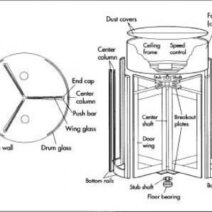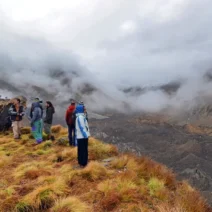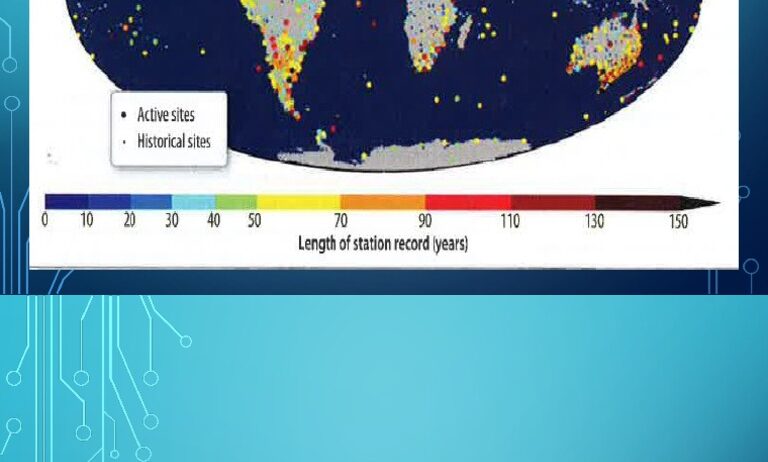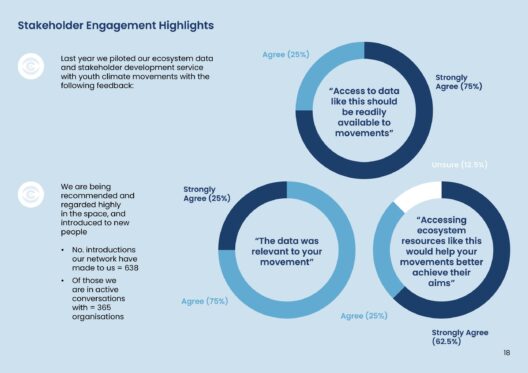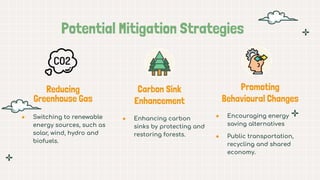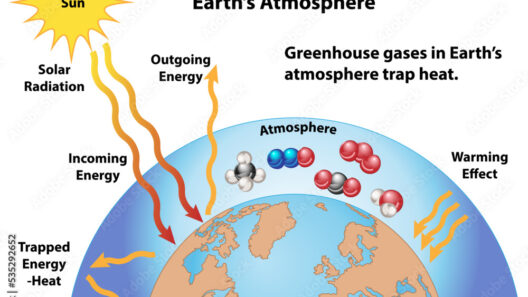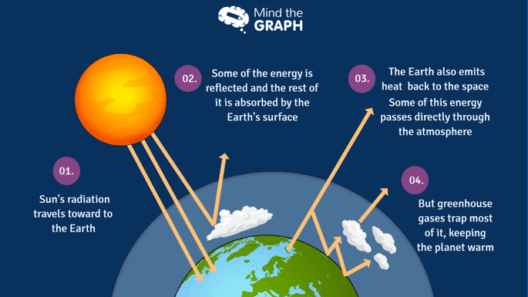Climatic phenomena such as the greenhouse effect and climate change both play pivotal roles in shaping our environment, yet they are often confused or conflated. Understanding the distinctions between these two concepts is not merely academic; it is an essential component of environmental literacy. By delving into the nuances that separate these phenomena, we can cultivate a deeper awareness of their implications for our planet.
At first glance, the greenhouse effect and climate change might appear to operate in tandem, both contributing to the warming of our planet. However, upon closer inspection, it becomes evident that they stem from different mechanisms, each with its own set of causal relationships and outcomes. To appreciate these differences, we must first explore the fundamental principles governing each effect.
What is the Greenhouse Effect?
The greenhouse effect is a natural phenomenon that has been occurring for millennia. It is a critical mechanism that maintains the Earth’s temperature by allowing sunlight to penetrate the atmosphere while trapping some of the heat that the Earth radiates back into space. This effect is primarily driven by greenhouse gases (GHGs) such as carbon dioxide (CO₂), methane (CH₄), and nitrous oxide (N₂O). Without the greenhouse effect, Earth’s average temperature would be approximately 33 degrees Celsius cooler, rendering our planet inhospitable.
In essence, GHGs act as a thermal blanket, controlling the delicate balance of the energy flux that sustains life. The incoming solar radiation is absorbed by the Earth’s surface, which subsequently emits it as infrared radiation. Greenhouse gases absorb this radiation, preventing it from escaping, thus maintaining warmth. Understandably, the greenhouse effect is a complex interplay of atmospheric chemistry and physics, but it is not inherently harmful. It is, in fact, essential for the existence of our ecosystems.
The Consequences of Enhanced Greenhouse Effect
However, the greenhouse effect also has a darker side. Human activities, particularly since the Industrial Revolution, have significantly increased the concentrations of GHGs in the atmosphere through the burning of fossil fuels, deforestation, and industrial processes. This enhancement of the greenhouse effect leads to significant climatic changes, particularly global warming.
Global temperatures have risen at an unprecedented rate, resulting in numerous environmental alterations. Glaciers are receding, sea levels are rising, and ecosystems are being disrupted. The idea of “climate feedback loops” further complicates our understanding. For example, as permafrost thaws, it releases trapped methane, a potent greenhouse gas, aggravating the very problem we are attempting to mitigate. Such feedback mechanisms create a cyclical pattern that sustains and intensifies the effects of climate change.
Climate Change: A Broader Context
Unlike the greenhouse effect, climate change is a hijacked term, used to describe a range of shifts in long-term climate patterns attributed mostly to human actions. While it encompasses the immediate impact of the enhanced greenhouse effect, it also includes broader changes such as alterations in precipitation patterns, more extreme weather events, and shifts in seasonal cycles. The International Panel on Climate Change (IPCC) reports delineate these changes as multifaceted, and their far-reaching consequences extend beyond mere temperature increases.
It is essential to delineate between short-term variability and long-term transformations. Weather can fluctuate from day to day, but climate refers to the average conditions aggregated over long periods—typically 30 years or more. Consequently, while a single hot summer may seem extraordinary, it does not necessarily signify a shift in climate. The collective trends, however, reveal a concerning trajectory that poses risks to biodiversity, food security, and human health.
Impacts of Climate Change on Planetary Systems
The implications of climate change are sweeping. Rising temperatures are contributing to the increased frequency and intensity of severe weather events like hurricanes, droughts, and wildfires. These phenomena not only devastate local ecosystems but also threaten human livelihoods and economic viability. Moreover, changing precipitation patterns disrupt agricultural cycles, rendering food security precarious in many regions around the globe.
In conjunction with these anthropogenic stresses, climate change poses a significant risk to biodiversity. Habitats are under siege as species struggle to adapt to rapidly changing conditions. Some might migrate to cooler zones, while others face extinction if their adaptability limits are exceeded. This loss of biodiversity has a cascade effect on ecological balance and can lead to the destabilization of entire ecosystems.
The Interconnected Nature of Human Impact
Another layer of complexity arises from the interconnectedness of human activities and environmental responses. The rise of industrialization spurs deforestation, mining, and urbanization—all of which release greenhouse gases and feed into the vicious cycle of climate change. Understanding the ways in which our actions are entangled in these climatic phenomena underscores the urgency of reevaluation. The need for sustainable practices and policies that address both the enhancement of the greenhouse effect and climate change is imperative.
Conclusion: Advocating for Thoughtful Action
Ultimately, recognizing the differences between the greenhouse effect and climate change is crucial for fostering informed discourse about climate action. While the greenhouse effect is a natural process, human interventions have drastically amplified its potential, creating a ripple effect that exacerbates climate change. It is not enough to understand these terms in isolation; we must act promptly to mitigate the impacts of our actions on climate systems. Advocating for sustainable initiatives, supporting policies that aim to reduce GHG emissions, and fostering a culture of environmental stewardship are ways in which we can pivot toward a more resilient future.
